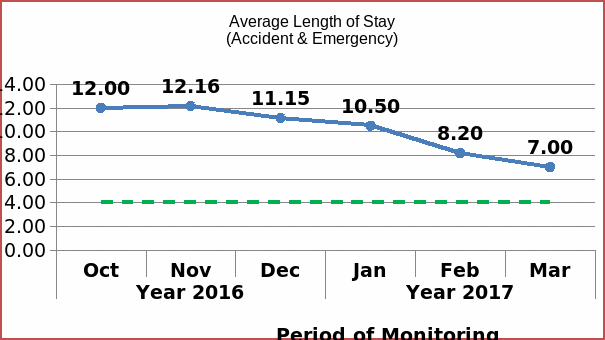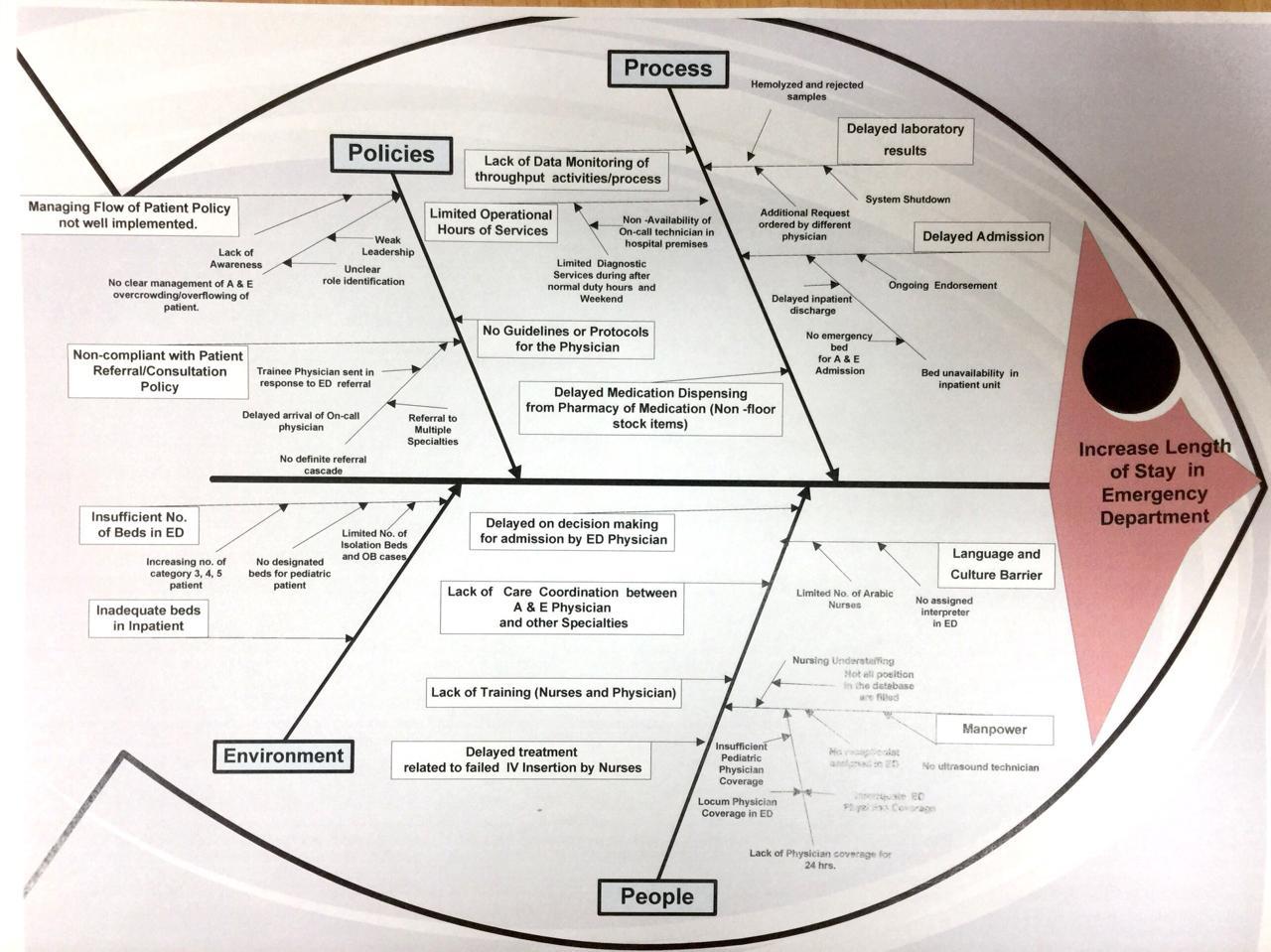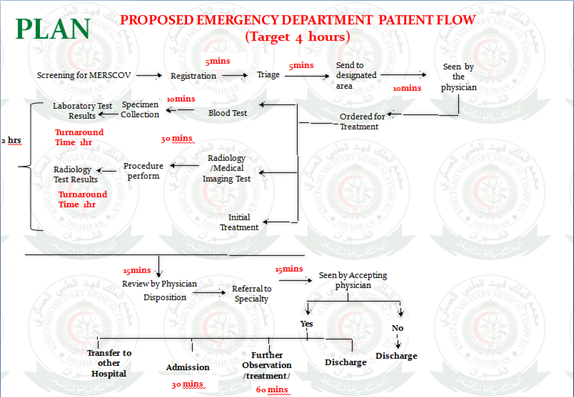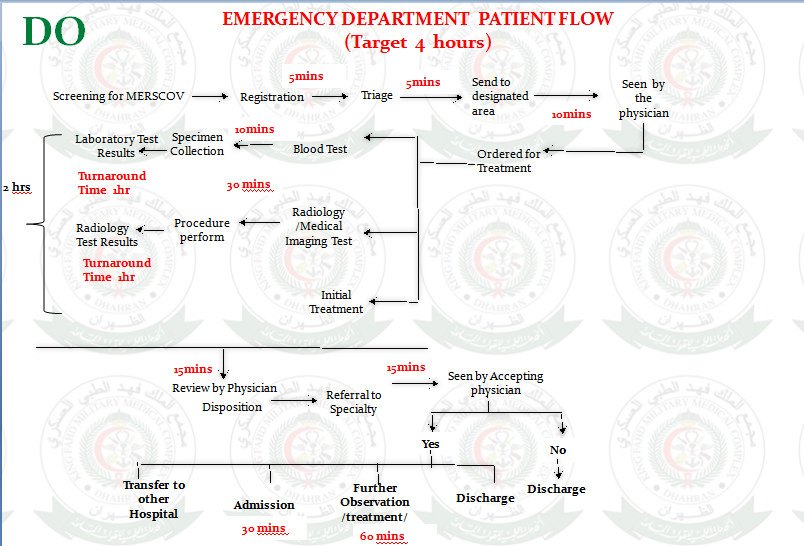Introduction
This report discusses process improvement at the King Fahd Military Medical Complex’s accident and emergency department. In the last two years, there has been a rise in the number of cases of prolonged stay and reduced patient workflow within this department. Through observation of previously conducted studies by the hospital, this report reveals the current process and its modeling, suggested improvements, and potential benefits from implementing these suggestions.
Summary of Investigations
Data collection was done through observation of a previous study conducted by the hospital within the department of accident and emergency in April 2017. The SWOT analysis of King Fahd Military Medical Complex revealed that the hospital was grappling with serious challenges in cancellations in the OR, documentation in medical records, length of stay in A and E department, bed utilization, and lack of space with the hospital building. These weaknesses were prioritized in order to come up with an optimal solution to these challenges, as captured in table 1.
Table 1: Prioritization of the current challenges facing the hospital.
As illustrated in table 1, a further study was conducted on the increasing trend in the length of stay within the accident and emergency department. The results revealed that the trend is a concern since the number of patients grew from 100 in October 2016 to 186 in December in the same year. The number then declined to 110 in March 2017. However, this was still a growth in the number of patients within the accident and emergency department. As illustrated in graph 1, the study also revealed that there was a steady decline in the length of stay, 12 hours in October 2016, to 7 hours in March 2017. However, against the ideal threshold of 4 hours, this duration was still longer.

Current Process and its Modeling
As illustrated in graph 1, the current process is modeled around improving patient flow in the accident and emergency department, thus, decreasing the length of stay from 12 hours to 4 hours for category 3, 4, and 5 patients. The process is also measured by financial performance, that is, the reduced financial cost in the department per bed. As captured in table 2, the financial measure is computed against the cost per hospital bed in the inpatient unit
The current process is also modeled around two categories of clients, that is, category 1(1 and 2) and category 2 (3, 4, and 5). This process is focused on tracking the entire procedure of service delivery against specific timelines and activities, as illustrated in figure 2.

Apparently, there are bottlenecks in the current process modeling, especially in the input of technology and personnel in the process of service delivery. The prolonged workflow is associated with low support personnel and poor coordination from one section to another.
Suggested Process Improvement
There is a need to improve the current bottlenecks in the service delivery charter to reduce the length of stay and reduce costs associated with prolonged stay. At the same, there is a need to optimize the patient workflow period from the current 7 hours per patient to the optimal 4 hours. This action will save up to 3 hours and lead to an improvement in customer experience within the department of accidents and emergencies. Therefore, there is a need to integrate an efficient technological application that monitors and increase the number of active physician protocol depending on the number of active patients.
This system could also be modified to improve the coordination of services at each table or section and offer language translation to avoid delay due to the language barrier, as illustrated in Figures 3 and 4. However, the proposed technological integration in the service charter might face the challenge of inadequate skill set for effective flow among the workforce. This challenge can be solved through a focused and periodic personnel training program.


Recommended Benefits of Adopting the New Technology
The proposed modification of the current technology system to integrate an automatic alert to active physicians depending on the number of clients would reduce the waiting time since more doctors will be alerted by the system to report to the department when there are more active clients. Moreover, the technology will improve the duration of processing the stages of treatment per client, thus, avoiding double queuing at each service station.
For instance, a client once served by a physician will have his or her details entered online for all other service tables. There will be no need to move to another queue. This technology is estimated to reduce the waiting time by an average of three hours. When properly implemented, the new technology integration would facilitate cost reduction per bed equivalent to three hours of service.
Works Cited
Kingdom of Saudi Arabia Ministry of Defense Medical Services General Directorate. Hospital-Wide Improvement Project: Decrease Length of Stay and Improve Patient Workflow in Accident and Emergency. 2017.